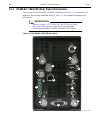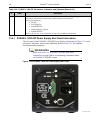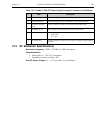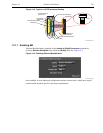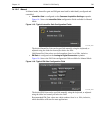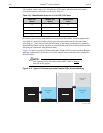
205
Chapter 14: PI-MAX4: EM Family
The PI-MAX4: EM family of scientific intensified EMCCD (emICCD) camera systems
features frame transfer EMCCDs that are fiber-optically coupled with a variety of Gen II
and Gen III filmless intensifiers.
NOTE:
WinX provides limited support of advanced PI-MAX4: EM
features. LightField should be used in order to use all features
available on the PI-MAX4: EM camera. Therefore, all
procedures within this chapter are LightField-specific.
The intensifiers offer the highest available sensitivity from UV through NIR. The dual-gain
mechanism (unique to these cameras) with optional picosecond gating capability and an
integrated programmable timing generator (SuperSYNCHRO) built into the camera make
these
emICCD cameras ideal for photon counting, time-resolved imaging and spectroscopy
applications. PI-MAX4: EM cameras are the only emICCD cameras in the market today to
offer both high frame rate at 10MHz/16-bit digitization, 1 MHz sustained gating repetition
rate and exceptional sensitivity.
In addition to the standard suite of features and modes, the PI-MAX4:EM family of cameras
can easily be configured to operate in the following modes:
• emICCD Mode;
• ICCD Mode;
• Photon Counting – Thresholding Mode;
• Integration – Clipping Mode,
• Kinetics Mode.
14.1 Electron Multiplication
Electron Multiplication (EM) is a sensitivity enhancing technique for CCDs that utilizes a
specialized frame transfer CCD known as an Electron-Multiplying CCD (EMCCD.) Within
its array, an EMCCD includes a second, extended serial register (typically called a
Multiplication Register) through which electrons travel while having a higher than normal
CCD clock voltage applied. Secondary electrons are then released within the register’s
silicon as a result of impact ionization.
The block diagram in Figure 14-1 illustrates this dual serial output register configuration.






